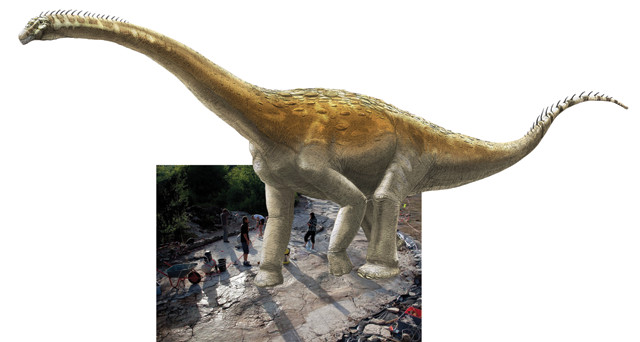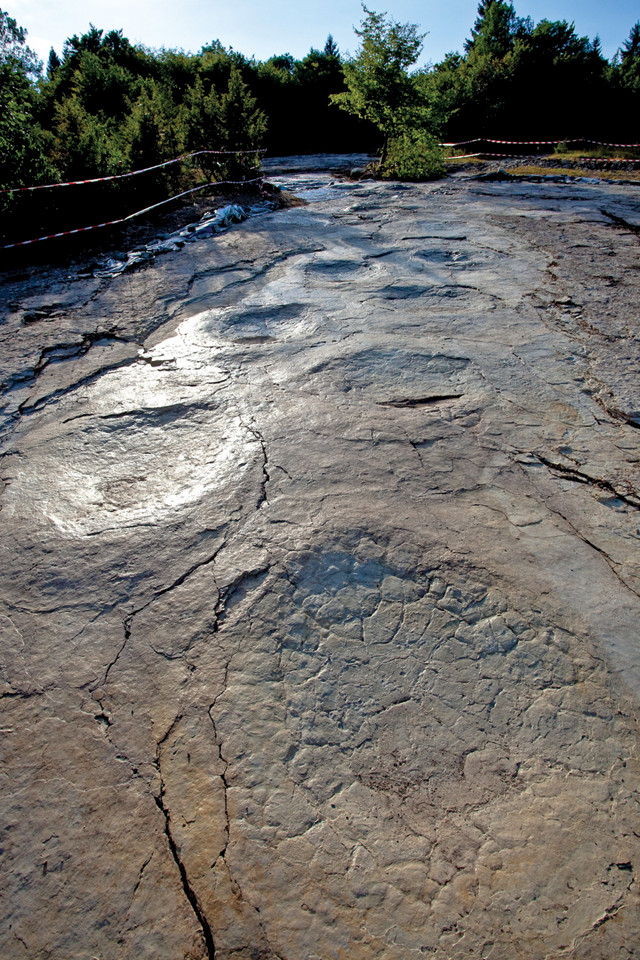
by Mary Caperton Morton Friday, February 23, 2018

Artist's rendition of the sauropod that made the tracks at Plagne. Credit: drawing: A. Bénéteau; photo: Dinojura.

A sauropod trackway found in 2009 in the French village of Plagne extends for more than 155 meters. Credit: P. Dumas.
Excavations at a dinosaur trackway found in 2009 in the French village of Plagne, 200 kilometers east of Lyon, revealed 110 sauropod footprints spanning a distance of 155 meters, making the site the world’s longest sauropod trackway. In a new study published in the journal Geobios, researchers report that the tracks were made roughly 150 million years ago and that the largest tracks measure more than a meter across. Analysis of the trackway suggested the prints were left by an animal at least 35 meters long and weighing more than 35 tons, that traveled about 4 kilometers per hour with an average stride of 2.8 meters. The prints were assigned to a new ichnospecies — a species only known from trace fossils — named Brontopodus plagnensis.
During the Late Jurassic, what is now eastern France was covered by a warm shallow sea dotted with low islands sprouting enough vegetation to support large herbivores and the carnivores that hunted them. The Plagne trackway, discovered on a limestone shelf deposited in the shallow sea, may have represented a mudflat. In addition to the sauropod tracks, the research team, led by Jean-Michel Mazin of the Pterosaur Beach Museum in Crayssac, France, also identified 18 three-toed tracks attributed to a large carnivorous theropod from the Megalosauripus ichnogenus.
© 2008-2021. All rights reserved. Any copying, redistribution or retransmission of any of the contents of this service without the expressed written permission of the American Geosciences Institute is expressly prohibited. Click here for all copyright requests.